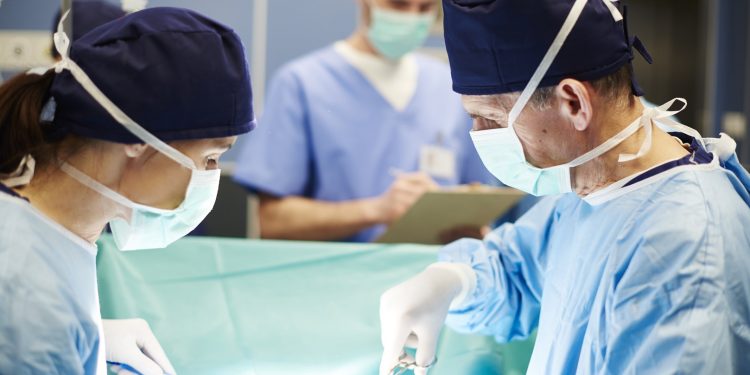Technology’s Role in Organ Transplant Success
Organ transplant surgeries involve the transplantation of a healthy organ from a donor into a recipient who has a damaged or diseased organ. The most common types of organ transplant surgeries include kidney, liver, heart, lung, and pancreas transplants.
The success rates of organ transplant surgeries have improved significantly over the years due to advancements in medical technology and improved surgical techniques. According to the Organ Procurement and Transplantation Network (OPTN), the one-year survival rate for kidney transplant recipients in the United States is over 90%, while the five-year survival rate is around 70%. The one-year survival rate for liver transplant recipients is around 85%, while the five-year survival rate is around 72%. The success rates for other types of organ transplant surgeries vary depending on the organ and the recipient’s condition.
The Role of Technology in Organ Transplant Surgeries
Technology has played a significant role in improving the success rates of organ transplant surgeries. From advanced imaging technologies to robotics, telemedicine, and AI, technology has enabled surgeons and medical professionals to perform more precise, efficient, and effective surgeries, resulting in better patient outcomes.
- Advanced Imaging Technologies for Organ Selection and Transplantation
One of the critical areas where technology has been useful in organ transplant surgeries is in organ selection and transplantation. Advanced imaging technologies, such as magnetic resonance imaging (MRI) and computed tomography (CT), allow medical professionals to assess the donor organs’ condition more accurately, minimizing the risk of transplant rejection and improving overall patient outcomes.
MRI uses a magnetic field and radio waves to create detailed images of organs and tissues, allowing medical professionals to assess the condition of the organ and identify any potential abnormalities. MRI scans are particularly useful in assessing the condition of the liver and pancreas and can be used to diagnose liver and pancreatic cancers, cysts, and other abnormalities that may affect the suitability of the organ for transplant.
CT scans, on the other hand, use X-rays to create detailed images of organs and tissues, providing more detailed information on the organ’s structure and function. CT scans are particularly useful in assessing the condition of the lungs and can be used to diagnose lung cancer, pulmonary fibrosis, and other lung diseases that may affect the suitability of the organ for transplant.
In addition to MRI and CT scans, other advanced imaging technologies, such as positron emission tomography (PET) and single-photon emission computed tomography (SPECT), may also be used in organ transplant surgeries. PET and SPECT scans use radioactive tracers to create detailed images of organs and tissues, allowing medical professionals to assess the organ’s function and identify any potential abnormalities that may affect its suitability for transplant.
- Organ Preservation Techniques Using Technology
Organ preservation is a critical aspect of organ transplant surgeries, as the viability of the donor organ is critical to the success of the transplant. Traditional methods of organ preservation, such as cold storage, have limitations and can result in reduced organ function and increased risk of rejection. However, with the advancements in technology, new organ preservation techniques have been developed, significantly improving the success rates of transplant surgeries.
One such technique is hypothermic machine perfusion, which involves placing the donor organ in a machine that pumps oxygenated blood and nutrients through the organ while keeping it at a cool temperature. This technique helps to mimic the body’s natural processes, reducing the risk of organ damage and increasing the viability of the organ during transport and transplantation.
Hypothermic machine perfusion provides several benefits over traditional cold storage techniques. For instance, it allows for longer preservation times, enabling medical professionals to transport organs over longer distances and expand the donor pool. It also provides a more controlled environment, allowing medical professionals to monitor and adjust the organ’s condition and perfusion rates to optimize the organ’s viability.
Another organ preservation technique that utilizes technology is normothermic machine perfusion, which involves perfusing the donor organ at body temperature. This technique has been shown to improve organ function and reduce the risk of rejection, making it an attractive option for liver and kidney transplants.
- Robotics in Organ Transplant Surgeries
Robotic-assisted surgery has become an increasingly popular option for organ transplant surgeries, particularly for kidney transplant surgeries. Robotic-assisted surgery involves the use of a robotic system that is controlled by a surgeon, allowing for precise and minimally invasive surgical procedures.
In robotic-assisted kidney transplant surgeries, the robotic system is used to help transplant the donor kidney into the recipient’s body. The robotic system provides a magnified, 3D view of the surgical site, allowing the surgeon to make precise incisions and sutures. This technique has several benefits over traditional open surgeries, including smaller incisions, less pain, and shorter recovery times.
Robotic-assisted kidney transplant surgeries have been shown to have several advantages over traditional open surgeries, including a shorter hospital stay, faster recovery times, and reduced risk of complications. Additionally, robotic-assisted surgeries may be an option for patients who are not suitable for traditional open surgeries, such as those with obesity or other health conditions.
- Artificial Intelligence and Machine Learning in Organ Transplant Surgeries
Artificial intelligence (AI) and machine learning have the potential to revolutionize organ transplant surgeries, allowing medical professionals to predict patient outcomes, identify potential complications before they occur, and develop more precise and effective surgical techniques. AI and machine learning algorithms can analyze vast amounts of data from previous surgeries, enabling medical professionals to make more informed decisions and improve overall patient outcomes.
One area where AI and ML have been applied in organ transplant surgeries is in organ selection. AI and ML algorithms can analyze vast amounts of data from donor and recipient medical records, genetic profiles, and other sources to identify the most suitable donor-recipient matches. This process helps to minimize the risk of organ rejection and improve the success rates of transplant surgeries.
AI and ML can also be used to predict post-transplant outcomes, allowing medical professionals to optimize post-transplant care and minimize the risk of complications. These technologies can analyze patient data to identify risk factors and predict outcomes, enabling medical professionals to make more informed decisions about post-transplant care.
Conclusion
In conclusion, technology has played a significant role in improving the success rates of organ transplant surgeries. Advanced imaging technologies have allowed for more precise organ selection and transplantation, while organ preservation techniques have extended the viability of organs, increasing the likelihood of successful transplant surgeries. Robotics has enabled minimally invasive surgeries with reduced risk of complications, and telemedicine and remote monitoring have facilitated post-transplant care. As technology continues to advance and become more accessible, we can expect to see even more significant improvements in organ transplant surgeries. With continued research, development, and investment, we can work towards a future where organ transplant surgeries are more accessible, successful, and beneficial for patients in need.
References https://www.weforum.org/agenda/2022/06/liver-transplant-health-technology/ https://www.ncbi.nlm.nih.gov/pmc/articles/PMC4911019/










Discussion about this post